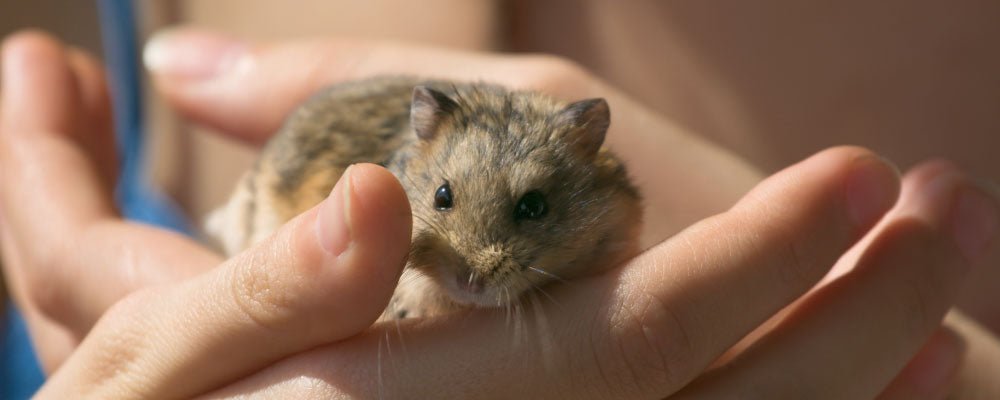
Campbell's Hamsters - Our Guide
What are Campbell's Hamsters?
The second most popular hamster (after the Syrian hamster of course) is the dwarf Campbell's Russian hamster or phodophus campbelli in Latin. The Campbell's hamster is named after W. C. Campbell who discovered it back in 1902. It is found is found in arid areas in central Asia, Mongolia Russia and China.
When this species was observed in Manchuria in the late 1930s, it was living with pikas and shared the pikas' burrows, paths, and tunnels, especially in the winter. Those observed in the wild dig escape and ventilation tunnels leading away from the burrow entrance.
How big are Campbell's Hamsters?
They are relatively smaller hamsters, weighing about an 30 grams (females) to 60 grams (males) and measuring about 10cm from nose to tail tip. Selective breeding has altered their original coloration, which was greyish-brown and a white belly with a thin, dark mid-dorsal stripe, but nowadays Campbells’s hamsters can come in many different colours.
How long do Campbell's Hamsters live for?
They live about a year and a half to two years in captivity, but some have lived four years. Because they are smaller than the Syrians, they are harder to hold and these Campbell’s hamsters move fast. Indeed, they are quite social hamsters and normally are quite happy living together if introduced while they are young.
Sometimes, you may find the Campbell's hamster simply called a "dwarf hamster" in pet stores since they arrived in the UK in 1964. By the early 1970s, they became popular in both the UK and the USA.
What do Campbell's Hamsters eat?
Their main diet consists of grasses and other vegetation as well as grasshoppers and other insects for moisture and food value. Due to the arid areas where they live, the Campbell’s hamsters are very efficient at concentrating their urine to conserve water.
In the wild, Campbell's hamsters awaken before dark. They mark their trail with scents from glands behind the ears on the lower abdomen. Before leaving the area of their burrow, they pause and groom themselves, rubbing their paws over their ears, around the eyes, and by rolling on the ground.
Because they are active for more hours a day than other hamsters, the Campbell's often travel farther away from their burrows in search of food. Indeed, the male Campbell's hamsters travel faster than the females, and because of this, they cover a much larger territory over the same amount of time.
All that extra activity from the Campbell's hamsters means that they need more effort and energy to live in their colder, drier, and more seasonal habitat than other hamsters and may be the reason that both Campbell's parents are involved in care of the young.
How do Campbell's Hamsters mate?
Unlike other hamsters, the male Campbell's really does play a substantial role in the survival of the young. The females dig a special nesting chamber just before they give birth, and line it with whatever is cosy and available – often dried grasses and sheep's wool. Campbell' s have a typical litter of eight pups with a gestation of eighteen to nineteen days.
The male then assists mechanically during delivery, licks and sniffs the young in the moments after the birth, and opens the pups' airways by clearing the nostrils. The father then continues to contribute to pup survival through direct care of the young.
He even hops into the nest when the mother is absent (as does an aunt to the young, if a female sibling of the mother is caged with the pair). As a result of the presence of these adults, pups are very rarely left alone in the nest and so are not subjected to cooling, which is an important survival factor when the pups are too small to maintain their own body temperature. The young then mature rapidly and reach sexual maturity in just four weeks.



Leave a comment
This site is protected by reCAPTCHA and the Google Privacy Policy and Terms of Service apply.